


|
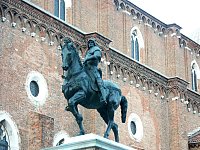
|
A secular military figure dominating a sacred spaceAn equestrian monument in bronze, this statue derives ultimately from the Roman Imperial work, the equestrian statue of Marcus Aurelius. Roman equestrian statues, however, depicted emperors and rulers. |
| Like Donatello's Gattamelata, this work depicts a condottiere, although this mercenary soldier seems more brutal and aggressive than Donatello's. Both are on high pedestals (this one even higher) and both depict majestic horses. Donatello's horse seems relaxed while Verrocchio's has a powerful neck and seems to be ready to prance off the pedestal. | 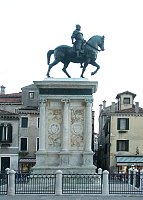
|

|
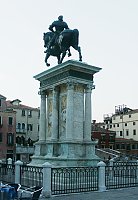
|
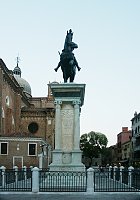
|
Views from the rear and front |

|
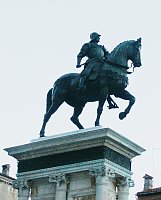
|
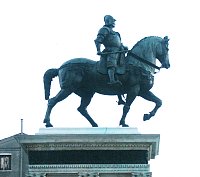
|
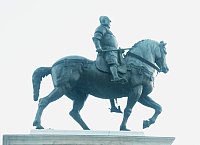
|
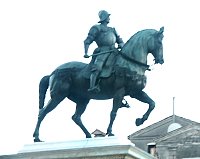
|
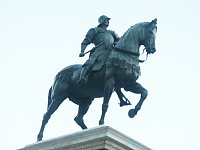
|
| Colleoni seems to have shifted his weight and is turning his taut body, almost standing in the stirrups. This is an image of fierce authority and brutal energy, an image of a man who enjoyed the play on his name, suggesting his powerful manhood, a man who compared himself to Hercules, and had hoped that his statue would be in the Piazza S. Marco, the most prominent square in Venice. His clenched jaw, staring eyes, and domineering posture are in part the artist's construct since the "portrait" was designed after Colleoni's death and Verrocchio had not known him. | ||
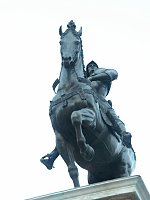
|
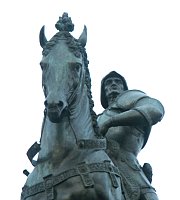
|

|
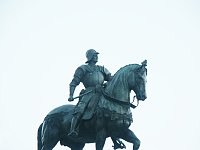
|

|
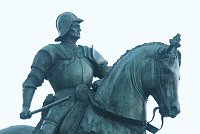
|
 Click here to return to index of art historical sites.
Click here to return to index of art historical sites.
 Click here to return to index of artists and architects.
Click here to return to index of artists and architects.
 Click here to return to chronological index.
Click here to return to chronological index.
 Click here to see the home page of Bluffton University.
Click here to see the home page of Bluffton University.

